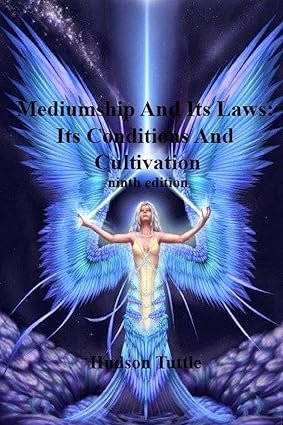
Introduction to Mediumship
Mediumship, as a spiritual practice or ability, involves serving as a bridge between the physical world and the spiritual realm. A medium acts as an intermediary, facilitating communication between those who exist in the physical plane and those who inhabit the spirit world. This unique ability has fascinated humanity for centuries, provoking both intrigue and skepticism.
To define mediumship, it is essential to understand the role of a medium. Mediums are individuals who claim to have the innate or developed capability to perceive and relay messages from spirits, offering insights, guidance, or comfort to those seeking connection with their deceased loved ones or spiritual entities.
The historical roots of mediumship trace back to ancient civilizations, where shamanic practices and oracles were common, exemplifying early forms of spirit communication. Ancient Egyptians, Greeks, and Romans held deep-seated beliefs in the afterlife, and their spiritual intermediaries were often consulted for divinatory purposes. These practitioners laid the groundwork for modern mediumship, which burgeoned significantly in the 19th century during the Spiritualist movement.
During this period, mediumship gained widespread attention and acceptance, with notable figures such as the Fox Sisters in the United States playing pivotal roles in its popularization. Their purported ability to communicate with spirits sparked a global interest, leading to the establishment of formal spiritualist churches and societies. Over time, mediumship evolved, incorporating various methods and practices, such as trance mediumship, physical mediumship, and psychic readings, to cater to the diverse needs of those seeking spiritual connections.
Today, perceptions of mediumship continue to evolve. While some view it as a legitimate and profound spiritual practice, others remain skeptical, questioning the authenticity of mediumistic experiences. Despite these differing perspectives, the fascination with mediumship endures, reflecting humanity’s enduring curiosity about life after death and the possibility of connecting with the unseen. This comprehensive guide aims to delve deeper into the intricacies of mediumship and its laws, providing a well-rounded understanding of this captivating practice.
The Different Types of Mediumship
Mediumship, the practice of mediating communication between the spirits of the dead and living humans, manifests in several ways. Principally, it can be categorized into mental, physical, and trance mediumship, each with its unique characteristics and methodologies.
Mental mediumship involves a medium receiving messages from spirits mentally. This process can take various forms, including clairvoyance (seeing), clairaudience (hearing), and clairsentience (feeling). Mental mediums often describe the communication as thoughts or images that occur within their mind. For example, a medium may receive a mental image of a rose if the spirit wants to convey love or an event. Tools like channeling and automatic writing are commonly associated with mental mediumship, enabling the medium to convey messages through speech or written texts directly from the spirit.
Physical mediumship is distinct in that it involves physical phenomena observable by others. This can include objects moving, unusual sounds, or materialization of spirit entities. Physical mediums serve as conduits for these occurrences, often during séance sessions, where participants might observe levitating objects or feel breezes with no apparent source. The manifestations in physical mediumship are tangible, and thus not confined to the perceptions of the medium alone, making it a unique and often startling form of spirit communication.
Trance mediumship occurs when the medium enters an altered state of consciousness or a trance. In this state, a spirit may take partial or full control of the medium’s body and communicate through them. This type of mediumship requires substantial training and trust, as the medium must be capable of entering and maintaining a deep, meditative state. Trance mediums often use this method to deliver messages, teachings, or insights from the spirit world, with the medium acting essentially as a vessel for the spirit.
The tools and techniques associated with these types of mediumship, such as channeling during mental mediumship or holding séances for physical mediumship, vary but each serves the ultimate purpose of bridging the gap between the physical and the spiritual realms. Understanding these distinctions helps in appreciating the diverse ways mediums connect with the unseen world.
The Laws Governing Mediumship
Mediumship, as a spiritual practice, is guided by a variety of spiritual and ethical principles that ensure its integrity. Central to these guiding principles is the intention behind the practice. A genuine medium operates with pure intentions, aiming to bring comfort, guidance, and healing to those seeking connections with the spiritual realm. This focus on positive intent aligns with the core tenets of spiritualism, emphasizing the medium’s responsibility to act as a bridge between the physical and spiritual worlds with the highest sense of duty.
Honesty, integrity, and respect for privacy are paramount in the practice of mediumship. Mediums must communicate messages accurately and transparently, avoiding any embellishment or misrepresentation. This honesty helps in fostering trust between the medium and their clients. Integrity ensures that the medium acts ethically, not exploiting the vulnerabilities of those seeking spiritual connections. Respect for privacy is crucial; personal and sensitive information received during sessions must be kept confidential unless explicitly permitted by the client.
Acknowledging the ethical considerations wrapped around mediumship, legal aspects also play a significant role. The practice of mediumship is subject to regulatory frameworks which vary by jurisdiction. In some regions, mediums might be required to obtain certain certifications or licenses to practice legally. Legal ramifications could arise from various issues, including the unlicensed practice or claims of fraudulent activities. Adhering to local regulations not only abides by the law but also upholds the profession’s credibility and trustworthiness.
The essence of ethical mediumship cannot be overstated. Maintaining trust and credibility is essential for the profession’s sustainability and the well-being of both the medium and their clients. Ethical practices ensure that the sacred connection between the physical and spiritual realms is honored and preserved, fostering an environment of respect and authenticity in mediumship.
Developing Mediumship Abilities
For individuals seeking to develop their mediumship abilities, there are a variety of techniques and practices that can enhance one’s connection with the spiritual realm. Engaging in regular meditation is foundational; it aids in cultivating a quieted mind and a heightened awareness, both crucial for perceiving spiritual energies. Through visualization exercises, aspiring mediums can further refine their ability to receive and interpret subtle messages from spirit guides.
Another effective approach is to attend spiritual development classes or circles. These communal settings offer structured learning and the opportunity to practice mediumship in a supportive environment. Here, fledgling mediums can receive feedback from experienced practitioners, which is invaluable for honing their skills. Additionally, these groups often incorporate exercises that boost intuitive abilities and foster a deeper spiritual connection.
Alongside practice, self-care is essential in mediumship. Grounding techniques, such as spending time in nature or practicing mindfulness, help maintain the medium’s energy levels and emotional stability. Incorporating protective practices, like visualizing a shield of light or using protective crystals, can safeguard the individual from any negative energies they might encounter during their spiritual work.
Experienced mediums often emphasize the importance of striking a balance between spiritual practice and daily life. Jane Porter, an established medium, shares: “Consistent meditation and grounding keep me centered, allowing me to channel messages clearly without depleting my energy.” Case studies like Jane’s highlight that success in mediumship isn’t solely reliant on inherent abilities but also on regular practice and personal well-being.
Ultimately, developing mediumship abilities is a journey of continuous learning and growing. By integrating meditation, visualization, grounding, and protection into your routine, you can progressively enhance your connection to the spiritual realm while ensuring that your well-being remains a priority throughout the process.
buy book
Discover more from detoatepentrutotisimaimult
Subscribe to get the latest posts sent to your email.
